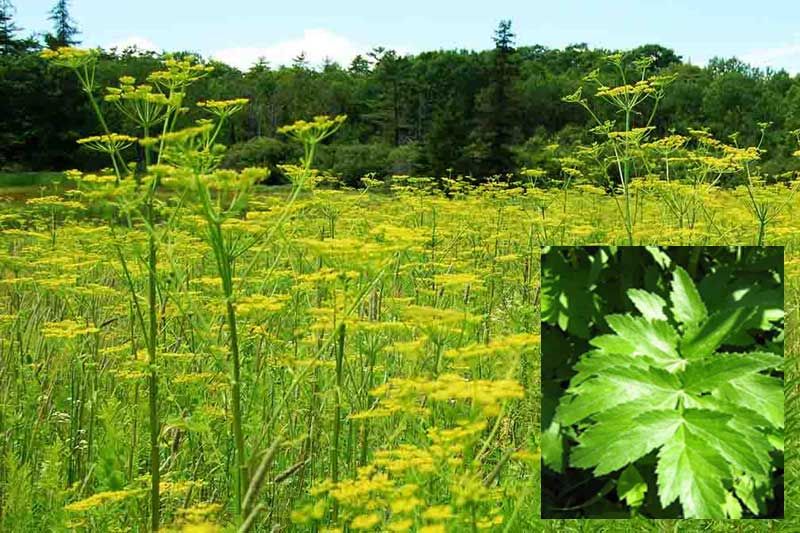Mississippi Valley Conservation Authority | Jul 22, 2015
Wild parsnip (Pastinaca sativa) is an invasive plant that is prevalent throughout the province, including the Mississippi Valley Watershed.
Wild parsnip, also known as poison parsnip, was added to the Noxious Weed List in 2015 and is a member of the carrot/parsley family. It typically grows a low, spindly rosette of leaves in the first year while the root develops. In the second year it flowers on a tall stalk and then dies. Like giant hogweed and other members of the carrot family, it produces sap containing chemicals that can cause human skin to react to sunlight, resulting in intense burns, rashes or blisters. Both the wild and cultivated forms of parsnip contain these toxic compounds, called furanocoumarins, and these do pose hazards to agricultural workers as well as those unwittingly exposed to the wild variety.
If you come into contact with the sap, you should:
- Wash thoroughly with grease-cutting soap and water
- Avoid further exposure of affected skin to UV/sunlight
- If burns occurs (symptoms appear within 48 hours) seek medical consultation
- If there is direct exposure to the eye (cornea), immediately flush with water and seek medical attention
The best way to avoid an unpleasant run in with wild parsnip is to learn how to identify it:
- It grows up to 1.5 metres tall.
- The single green stem is two to five centimetres thick and smooth with few hairs.
- Compound leaves are arranged in pairs, with sharply toothed leaflets that are shaped like a mitten.
- Yellowish green flowers form umbrella-shaped clusters 10 to 20 centimetres across.
- Seeds are flat and round.
If you see wild parsnip on public property, contact the local municipality. If you think you have wild parsnip on your property, call the Invading Species Hotline at 1-800-563-7711, or report your sighting online at. www.eddmaps.org/Ontario. You will be asked to send in photos for identification. DO NOT touch, cut or collect parts of the plant for identification purposes.
Unlike most invasive plants, parsnip (the cultivated variety, as opposed to the wild plant) plays a role in agriculture, and is grown in all Canadian provinces as an annual crop.
Because of its unique chemical make-up, Wild Parsnip is the subject of research for a variety of medical and other uses, including insect repellant, treatment of skin disorders such as psoriasis and its potential anti-fungal, anti-bacterial and anti-inflammatory properties.
Wild Parsnip has also shown promise in phytoremediation of soils contaminated by metals. Research has shown that parsnip can absorb cadmium, nickel, lead and manganese.
More Stories
- Province clarifies stance - Says Private Well Water Testing Will Continue
- Frontenac County Stays Internal for CAO - Appoints Kevin Farrell
- Addington Highlands Tax Bill Going Up 6.93%
- Perth Road United Church Donation to The Grace Centre
- 21 Years Of Dump Life Left At South Frontenac Waste Site
- Eclipse 2024 – Once In A Lifetime
- National Tourism Week
- NeLL Spring Open House and Anniversary Concert
- 25 years at Bishop Lake Outdoor Centre
- Grounds Contracts Down, Custodial Contracts Up In Central Frontenac

